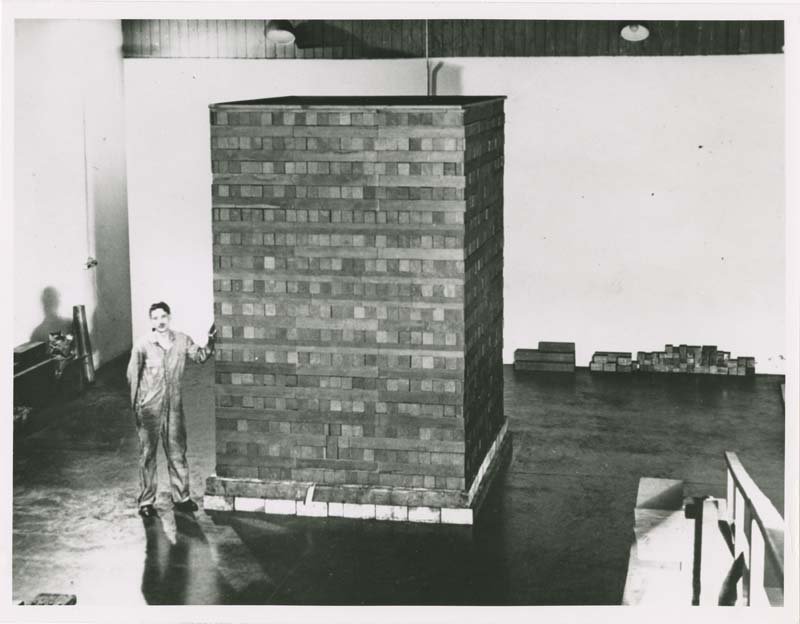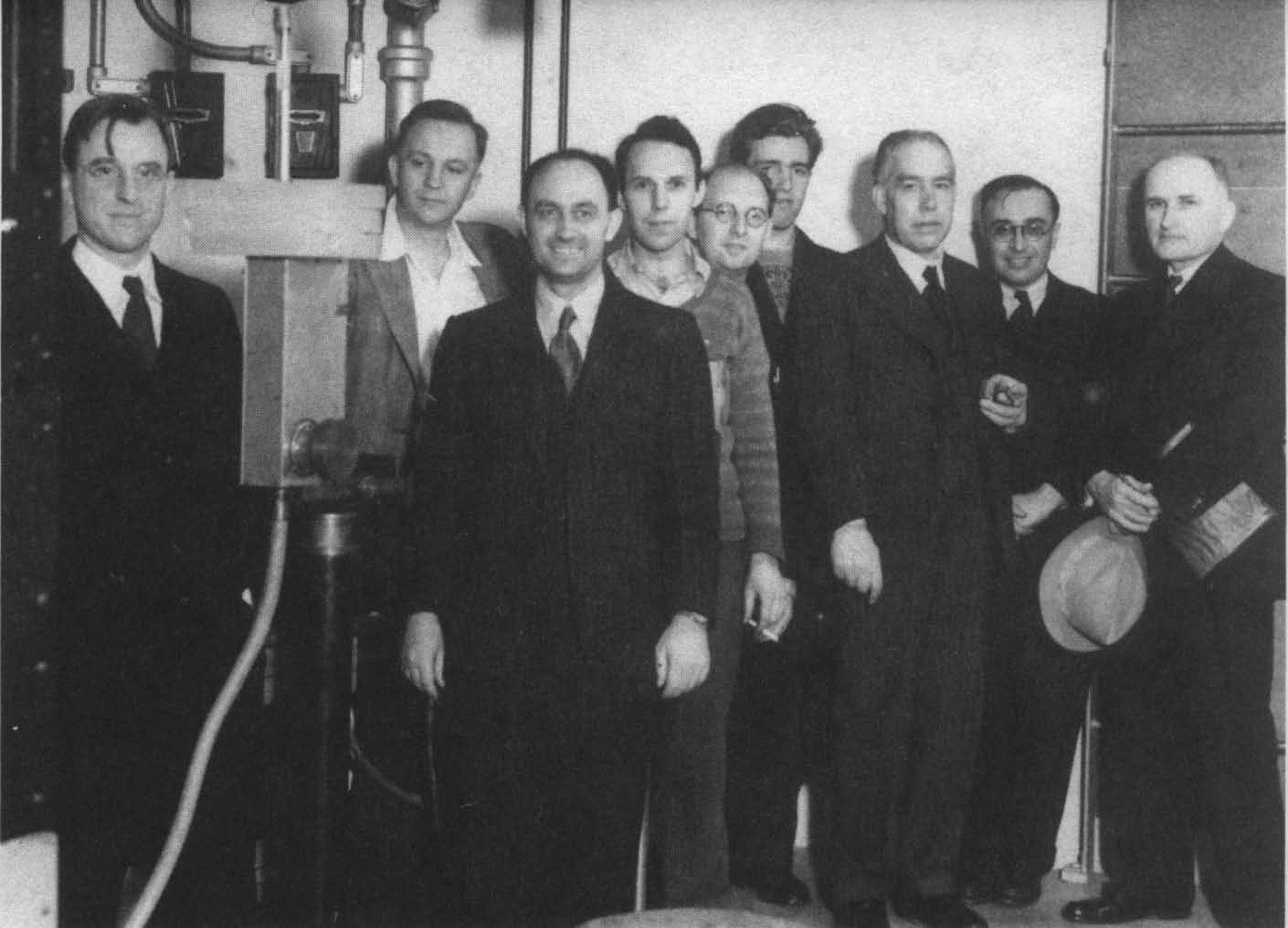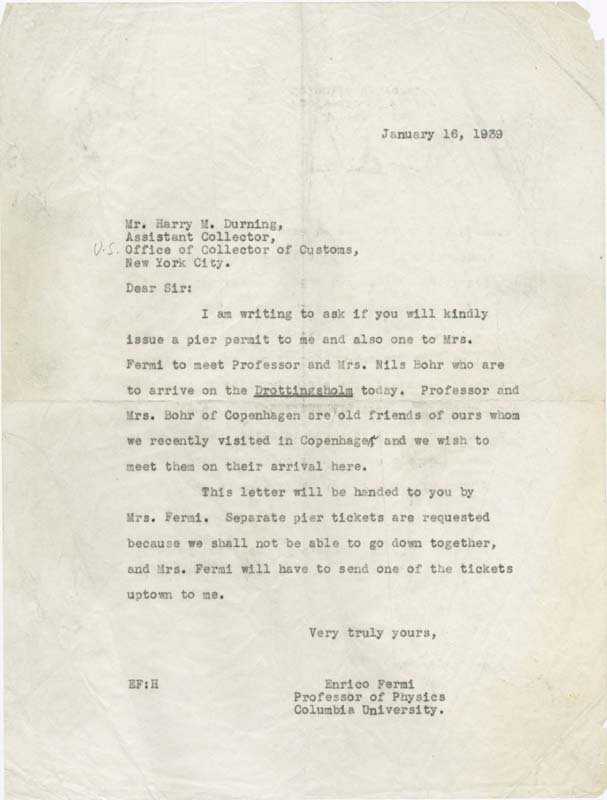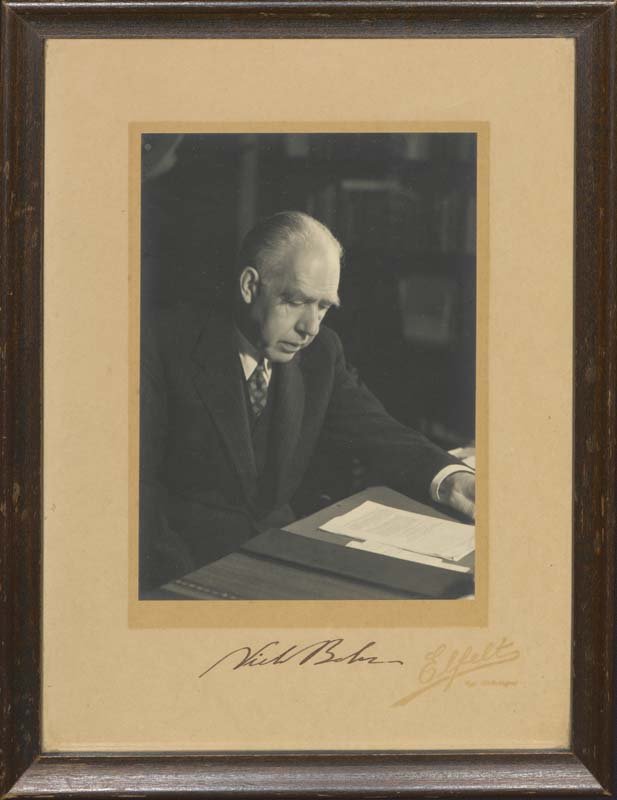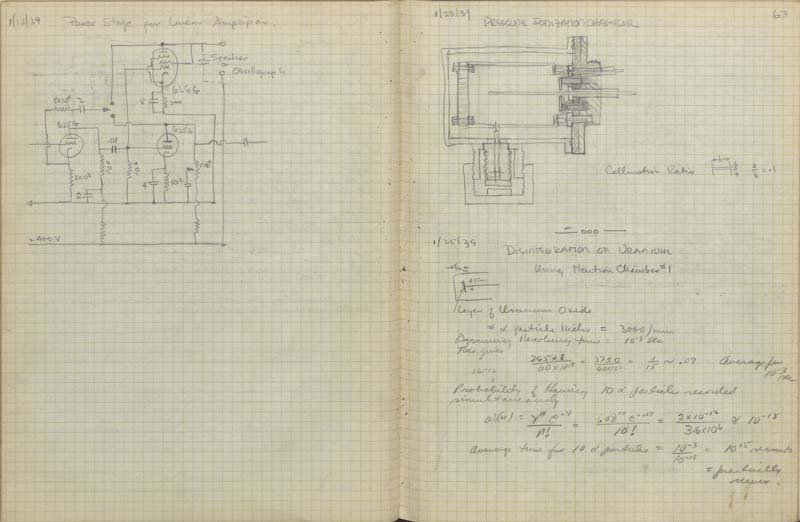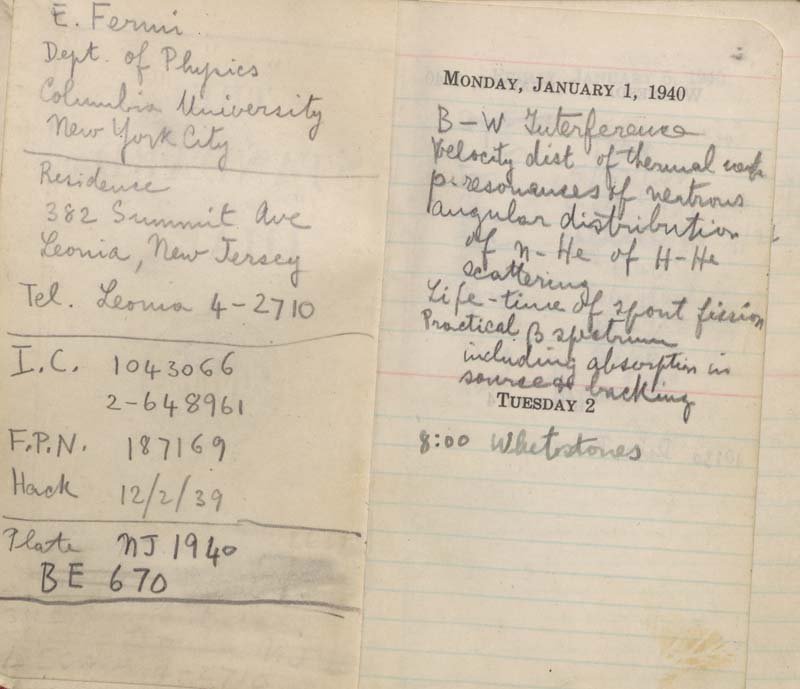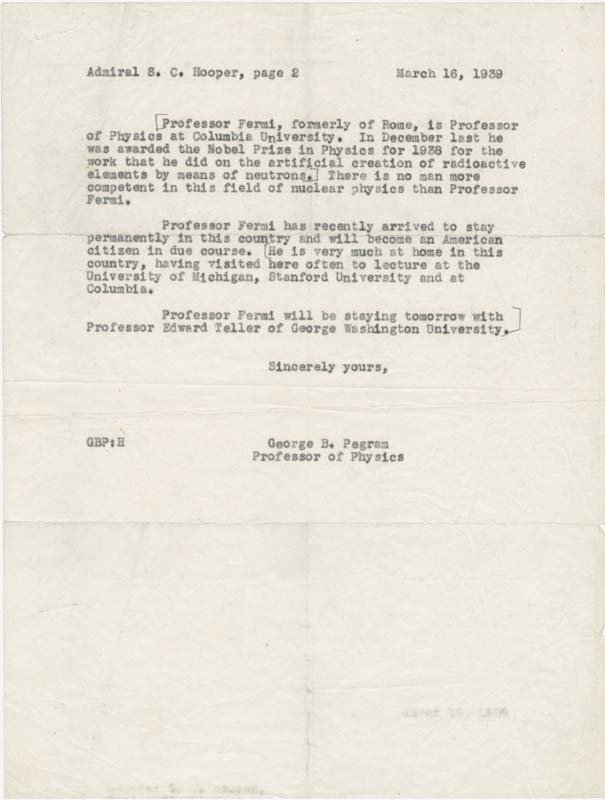Fission
In late December 1938, as the Fermis were on their way from Stockholm to New York, German scientists Otto Hahn, Lise Meitner, and Fritz Strassman discovered nuclear fission. Physicist Niels Bohr brought the momentous news to the United States a few weeks later, announcing the successful splitting of the uranium atom on January 26, 1939, during the Fifth Washington Conference on Theoretical Physics at George Washington University. Two days later, Fermi, Bohr, and other colleagues witnessed a recreation of the fission experiment at the Carnegie Institution in Washington. Word of the discovery spread rapidly, spurring new experimental work at Columbia, Princeton, Berkeley, Chicago, and other university laboratories.
Department of Terrestrial Magnetism, Carnegie Institution, Washington, DC, photograph, January 28, 1939
Carnegie Institution of Washington
Pictured from left: Robert Meyer, Merle Tuve, Enrico Fermi, Richard Roberts, Leon Rosenfeld, Erik Bohr, Niels Bohr, Gregory Breit, John Fleming
